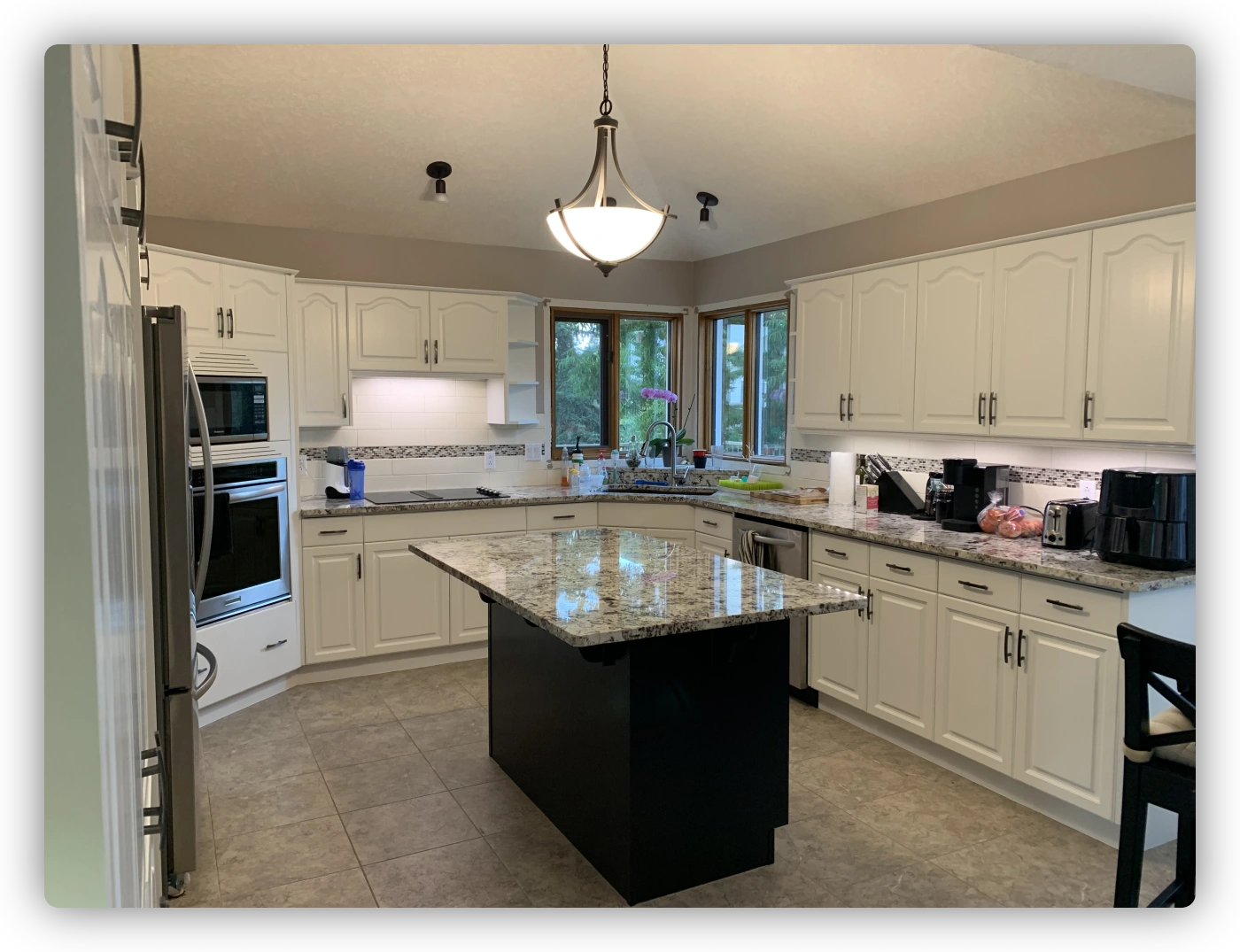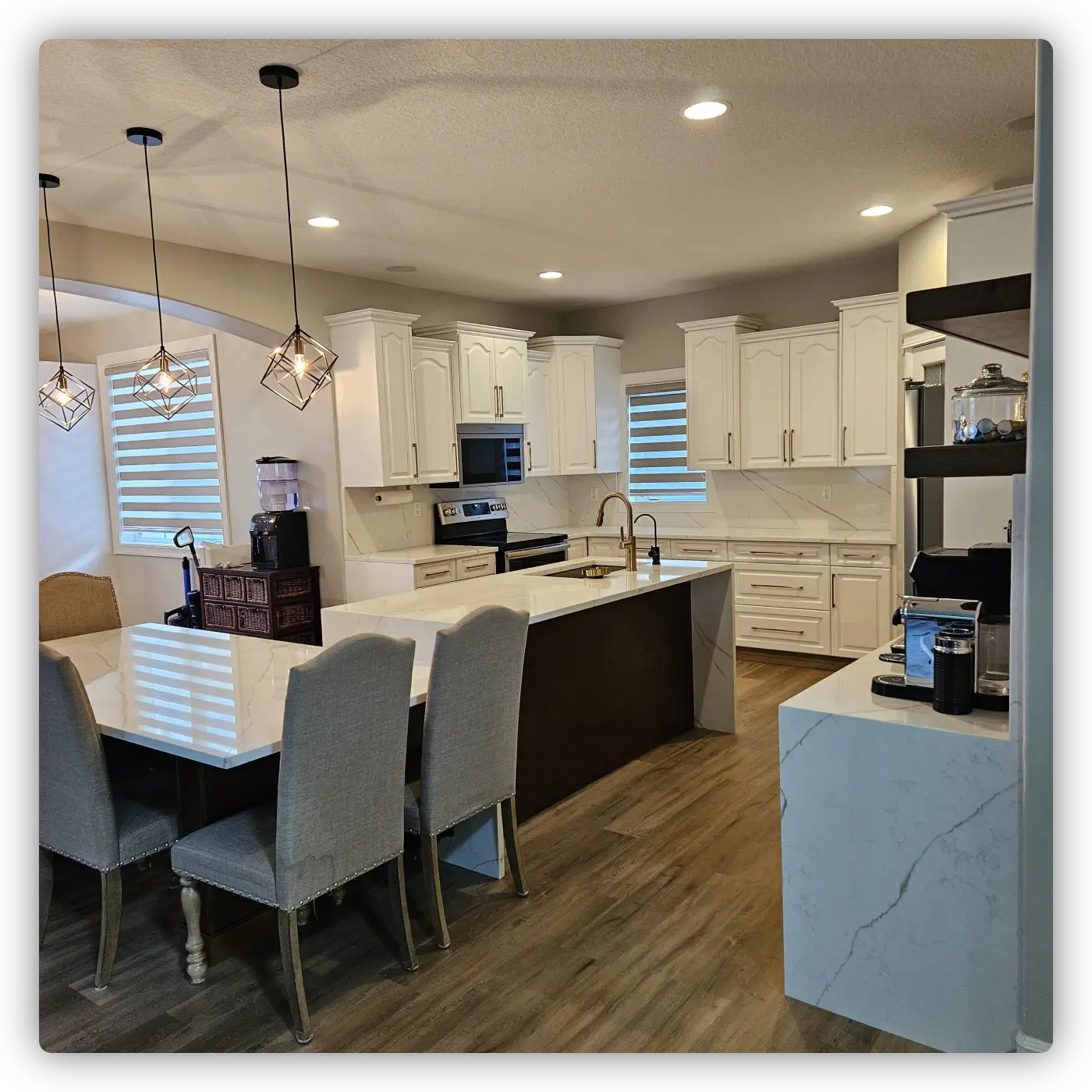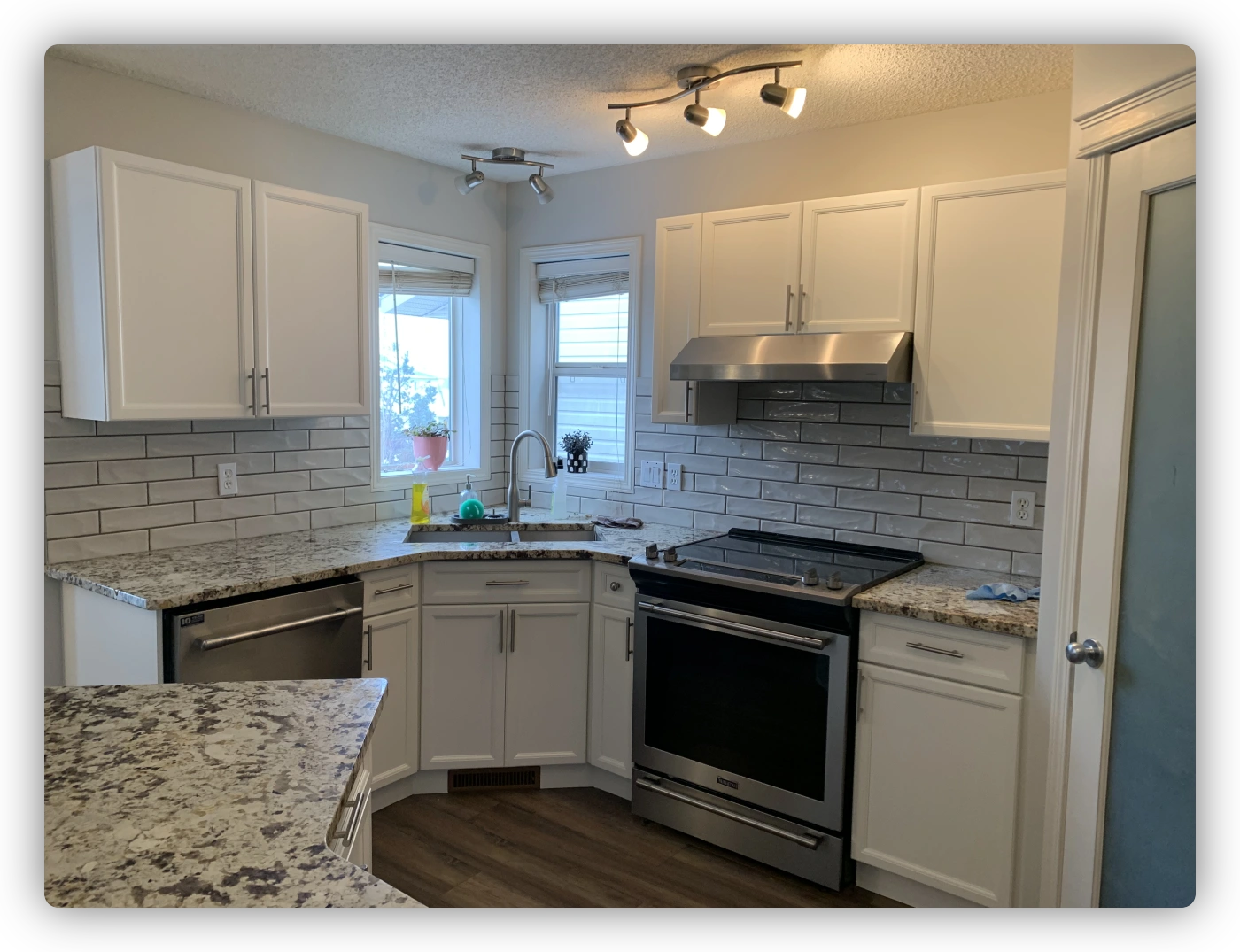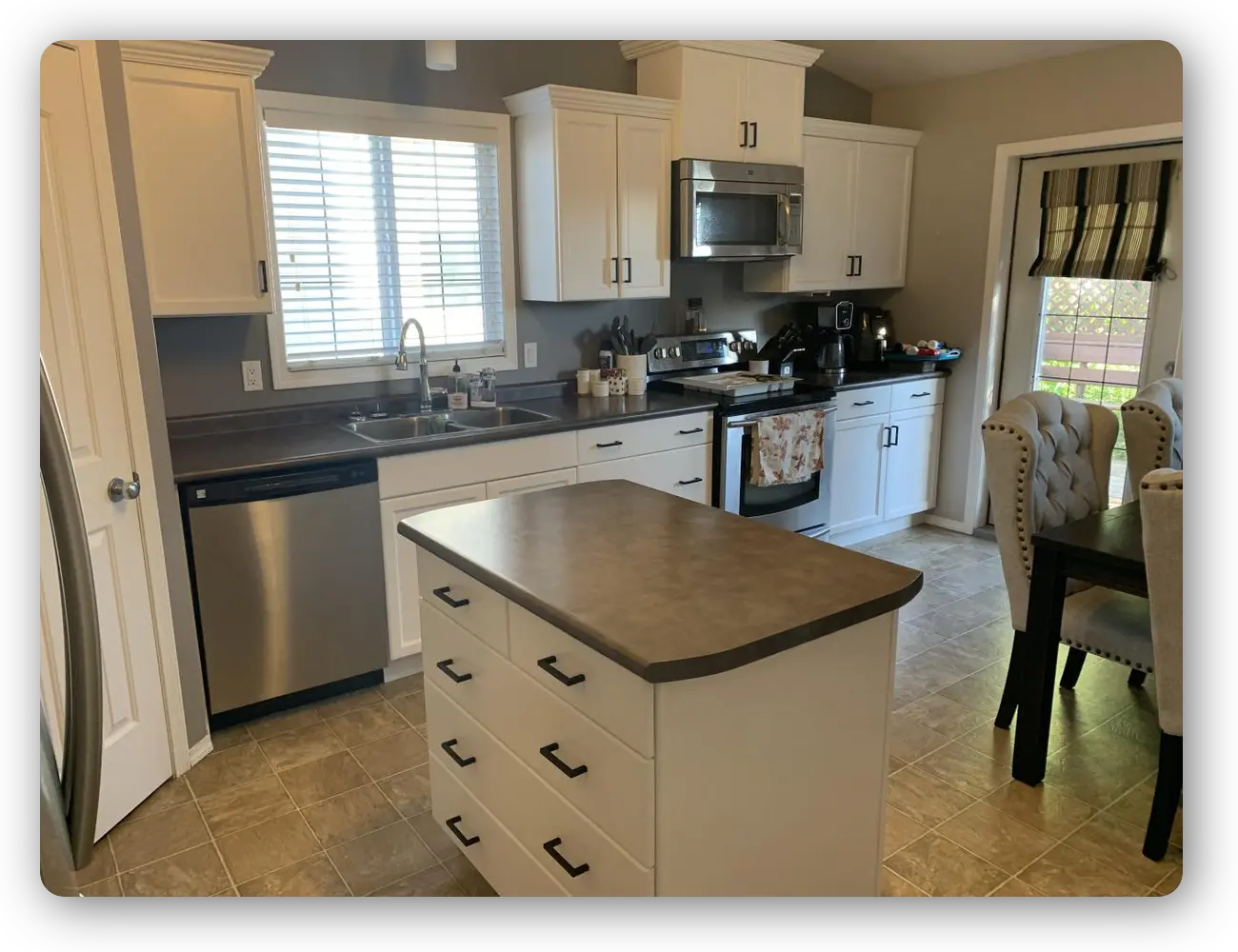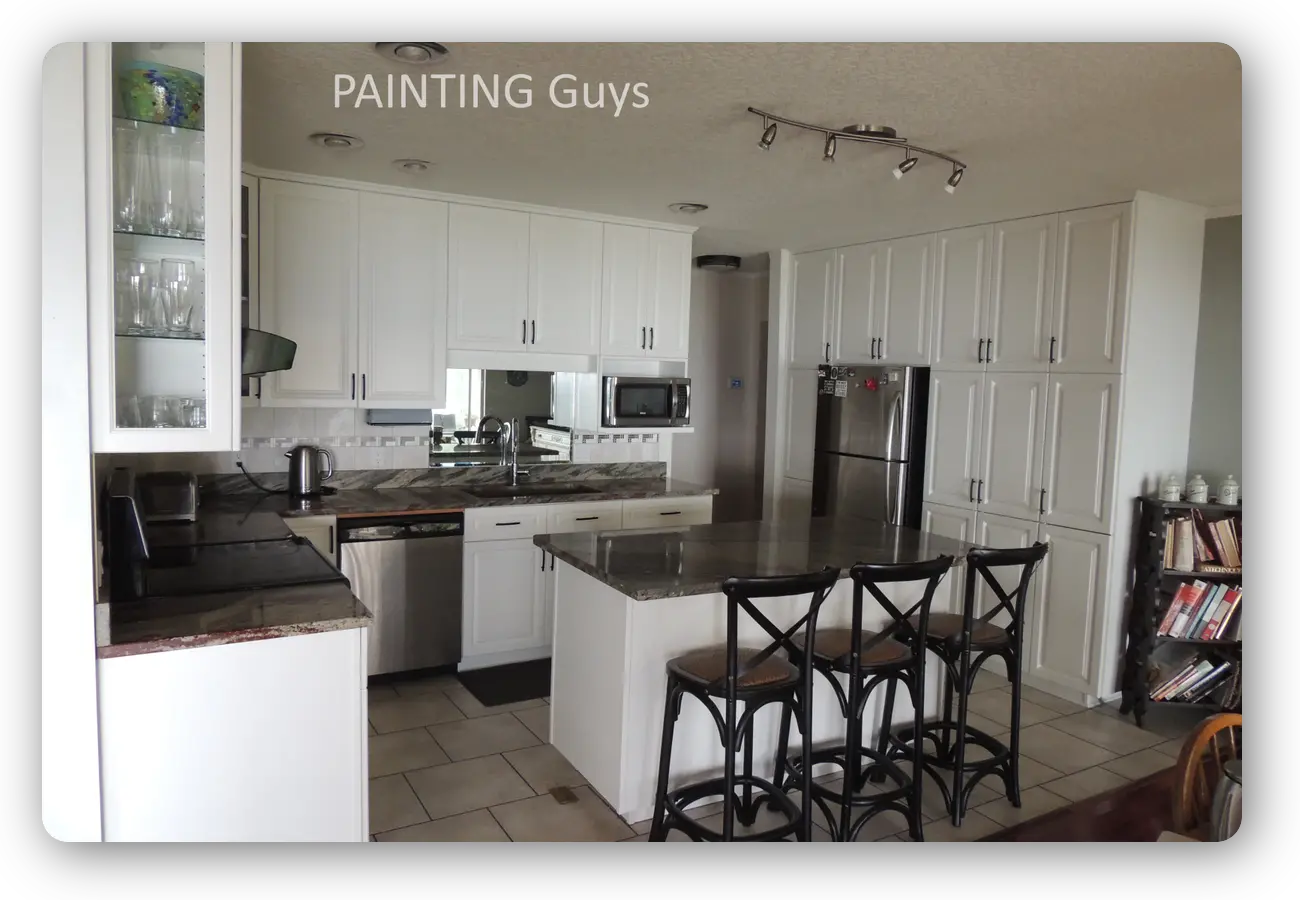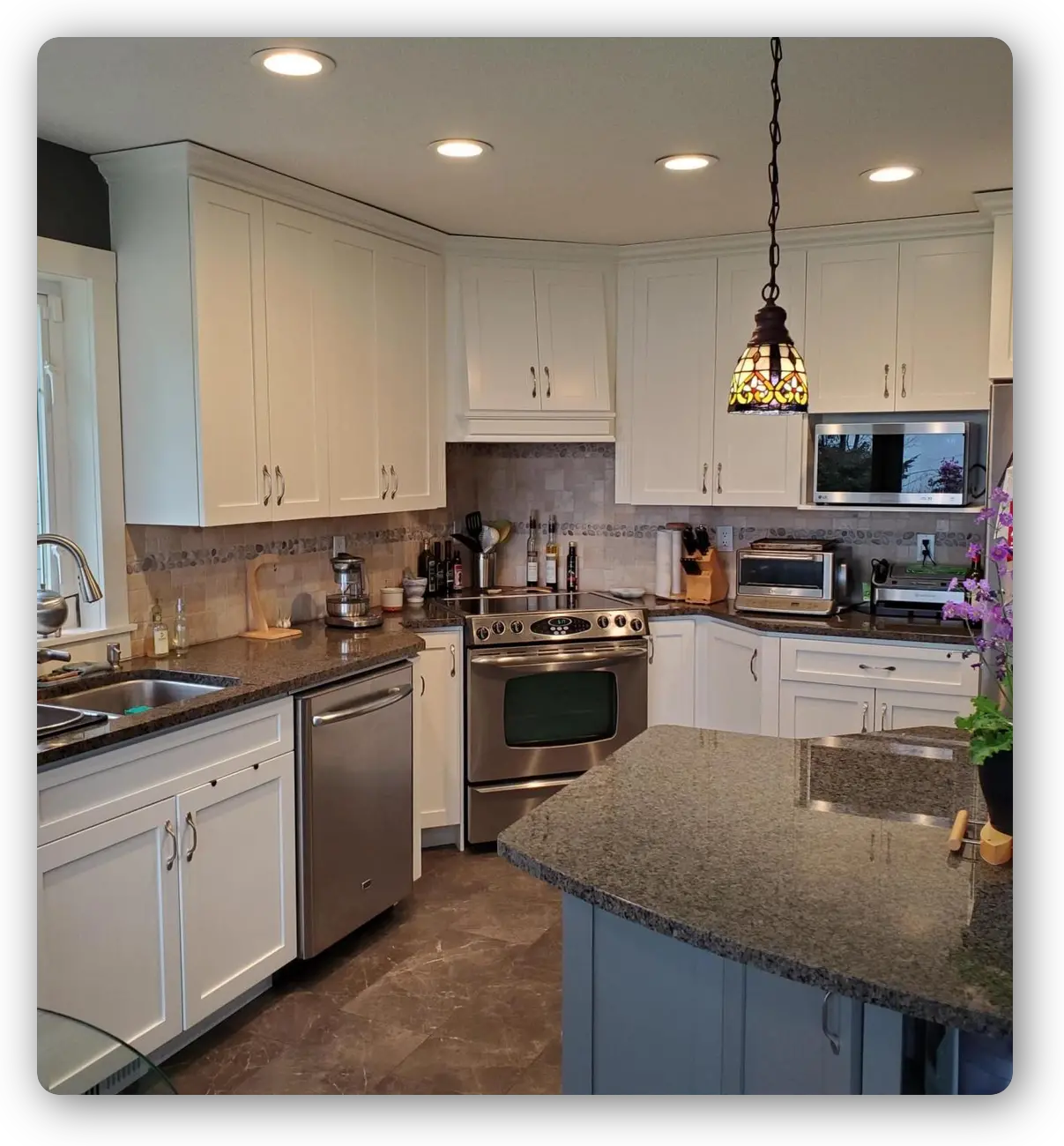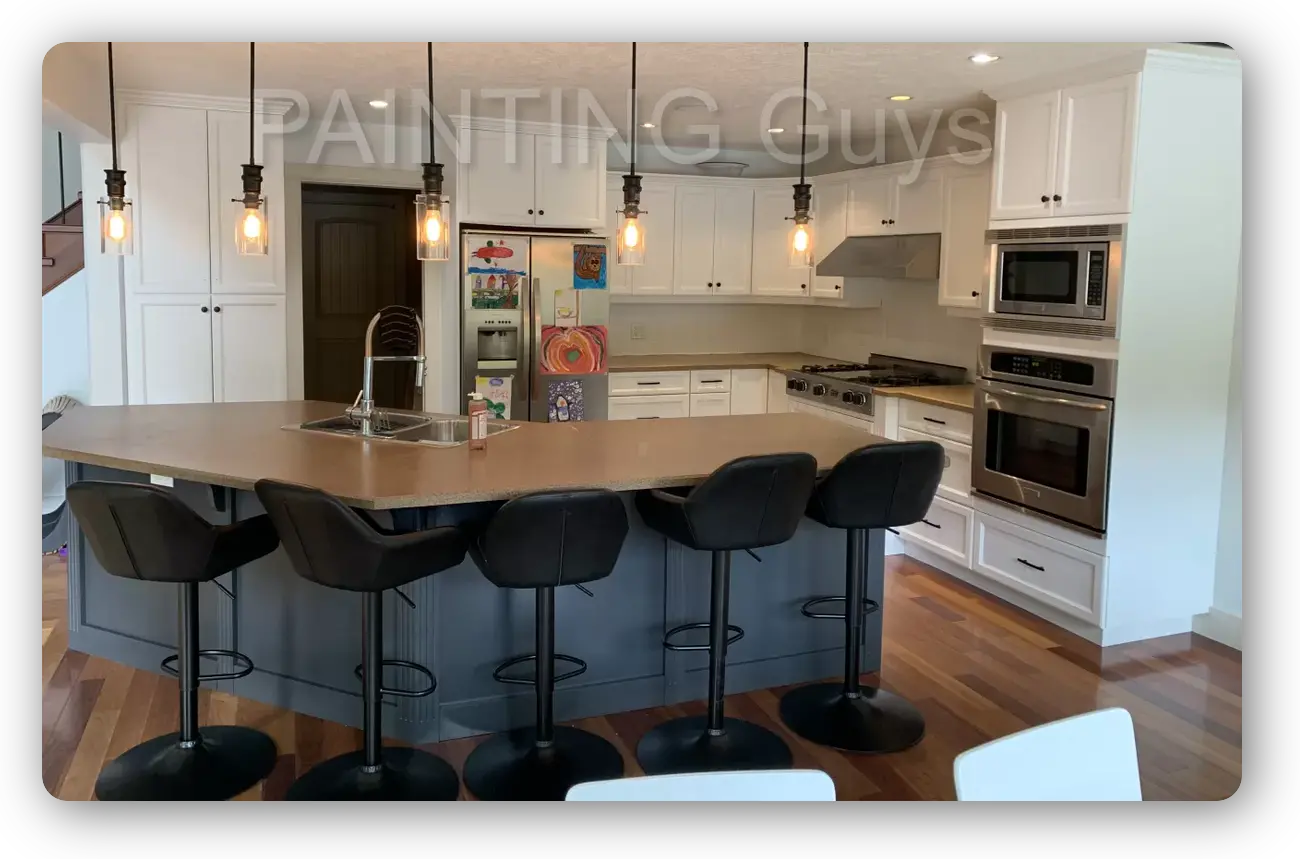Call or Text: 780-815-3039
Cabinet Painting
Chantilly Lace Cabinets, Lloydminster
High-quality cabinet painting for Lloydminster and the surrounding area.
We paint kitchen cabinets to look new again
Can I paint my kitchen cabinets without sanding?
Why Sanding is Important: A Guide by PAINTING Guys
Introduction
Mistakes Painting Kitchen Cabinets
No one is more meticulous than professional cabinet finishers, so here are some key pointers to consider:
Proper Environment: Avoid painting in cold or dirty spaces. Use a controlled environment like a spray painting shop.
Cleaning and Sanding: Thoroughly clean cabinets to remove all grease and grime. Always sand off old varnishes to create a good base for paint adhesion.
Priming and Painting: Use shellac as a primer for oak and other open grain woods to seal in tannins. Hand rub sanding sealer into the oak grain to fill it without closing it completely. Use non-grain-raising primers and topcoats with acrylic paint.
Sealing and Filling: Properly seal crowns, corners, and wall openings. Fill and caulk cracks in the correct order, allowing products to cure between coats. Do not caulk or fill cracks that need to remain flexible.
Labeling and Reassembly: Remove and label everything that can be logically removed from the kitchen, but never remove the boxes from the walls. Label everything to ensure easy reassembly.
New Hardware: Replace old hardware with new for a fresh look.
Professional Finish: Ensure painted cabinets match spray finishes for a professional appearance. Protect and deliver freshly painted cabinets flawlessly.
How NOT to paint kitchen cabinets
Spray painting cabinets on walls is not how we paint your cabinets
While painting kitchen cabinets can be a rewarding DIY project, there are several common mistakes to avoid to ensure a professional-looking finish.
What sheen of paint should be used on kitchen cabinets?
Refinished older cabinets always look the best with a satin finish!
The high-quality satin finish is durable, cleans well, hides fingerprints exceptionally well, and looks amazing, especially on refinished older kitchen cabinets.
Flooring before painting kitchen cabinets
Flooring can be a very dusty process so you should do all the messy stuff before painting kitchen cabinets, especially the demolition.
Refacing cabinets
Refacing cabinets is term used to describe replacing sections of cabinets to give them a new look.
These sections can be new doors and drawers.
Refacing doors and drawers can give your kitchen a brand new look in a fraction of the time it takes to replace all your cabinets.
Should I Paint Old Kitchen Cabinets?
Painting kitchen cabinets is one of the easiest and most affordable ways to give your kitchen a brand-new look
- Is the finish on your kitchen cabinets looking old and dirty?
- Is the finish chipping and flaking off?
Can all types of cabinets can be painted?
All types of cabinets can be painted including wood, steel, plastic, laminate, melamine, and even thermofoil
What is the best paint to use on kitchen cabinets?
Special cabinet paints are available from most manufacturers however PAINTING Guys only use 100% high-quality acrylic paint on older kitchen cabinets.
We’ve been spraying and hand painting acrylic paints on cabinets and furniture for decades and there simply is no better paint than Benjamin Moore!
Degreasing cabinets for painting
Spray Nine
Whenever we need a product to remove grease from the kitchen cabinets we are painting, Spray Nine breaks down grease better than any other degreaser we’ve used.
It also doesn't seem to conflict with bonding primers like TSP.
Incorrect primer on kitchen cabinets
When it comes to kitchen cabinet painting, its important to use the proper primer for a variety of reasons:
Why we don't use alkyd (oil base primer) when painting kitchen cabinets.
Painting Laminate Kitchen Cabinets
Imagine going from dated laminate kitchen cabinets to an amazing two-tone kitchen in a week!
Look at how bad this cabinet door looks, yet PAINTING Guys transformed these laminate cabinets into an amazing-looking kitchen for a fraction of the costs of new cabinetry.

